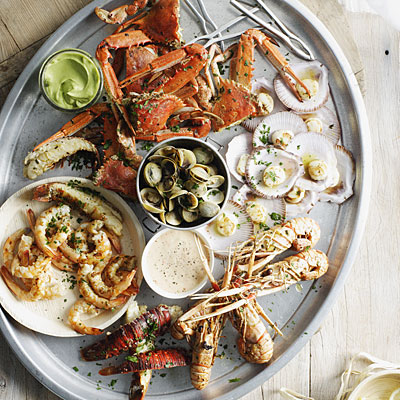China is a traditional fishery country with an aquaculture production accounted for 70% of the world and meanwhile it is also a big country of fishery consumer with more than 32839 thousands of tons in 2014. Compared to years ago, aquatic products rarely appeared on Chinese Dining table, Chinese nowadays with the rise of income, have improved their living standard and, therefore, enhance their tastes for aquatic products. Indeed, the demand for high-quality products raises the sales of high-end imported seafood. It is even easier with the development of the cold chain logistics. In addition, every foreign seafood company is looking for different channels of distribution in China.
Rising demand for high-end imported seafood
High-end imported seafood market is continuously rising as they are becoming a common dish on the Chinese table. Daxue recent report shows that China has imported 2731 thousand tons of foreign seafood in 2014 with a growth of 1.94%. It is generally believed that imported seafood has a higher quality and tastes than the domestic one. For instance, Australian lobster is a precious ingredient because of its high nutritive value and delicious taste, which gains wide popularity among Chinese consumers. Salmon from Norway, deep-sea cod from Alaska, seafood from Iceland and other imported aquatic products have been really well appreciated by Chinese people as their quality is guaranteed. Moreover, Food safety is still a huge issue in China since some domestic seafood are reported to be raised up with hormones. As a result, high-end consumers tend to buy fresh and purely natural imported seafood regardless of their high cost.
Development of logistics helps to keep fresh
Cold chain logistics has changed and developed rapidly within the last years in China. It is now possible to transport fresh seafood directly to consumers within several days as soon as they are fished. In only one day, several planes and boats are shipping seafood from Japan, providing Chinese with a great amount of Japanese seafood every day. The number of planes from Europe and America when the traditional fisheries remain is highly increasing to meet the demand. Technology for frozen conservation is applied throughout the whole trip. For instance, Australian lobster is kept in a tank filled with cold water to reduce its temperature and it is then packed in an insulation box filled with sawdust when still alive. Some seafood company such as ICEFRESH is taking advantage of the rising demand by proposing a service to seafood merchants with a unique technology, the Air Circulation Temperature Control Technology which help to preserve the fish before they are delivered to retails.
Different channels increase the sales
Imported seafood is usually supplied to hotels and restaurants. However, foreign producers are seeking new channels to sale their products. E-commerce is the first choice as Chinese expense on online shopping is getting higher and higher, mall such as Tmall.COM (In Chinese: 天猫) and Jingdong.com (In Chinese: 京东商城) have a high reputation and reliable operating system. But some foreign companies also open their own store in big cities in order to enhance the communication of the brand. For instance, a company from Iceland plans to open a “healthy club” where consumers can experience the seafood tasting and learn more about the brand and its history. Packaging the seafood as a gift is also a common choice among producers, as a gift is a perpetual tradition among Chinese when it comes to holidays or when they are visiting friends. Indeed, Chinese consumers love high-end imported seafood as a gift, showing their good taste. Therefore, developing new and innovative way to distribute seafood toward Chinese consumers can effectively increase the sales in China.




